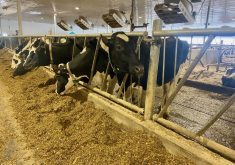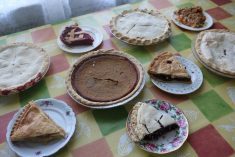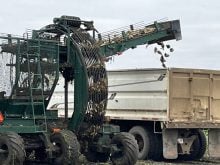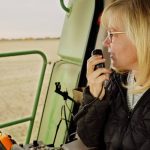PINCHER CREEK, Alta. – Bricoloeur is a French word meaning someone who invents his own strategies for using existing materials in a creative or useful way.
That describes Pincher Creek rancher Stewart McRae, who has spent five years finding new ways to make his home more energy efficient.
His conversation is peppered with, “I have an idea. I know I can build it. I know I can make it work.”
When McRae, his wife, Kelly, and their two boys, Haze and Tate, took over the family ranch seven years ago, they were shocked to see their home heating bills were as high as $600 per month.
Read Also

Accurate accounting, inventory records are important
Maintaining detailed accounting and inventory records is not just a best practice; it’s a critical component of financial health, operational efficiency and compliance with programs like AgriStability.
The house has R-12 and R-20 insulation values and they installed thermal pane windows. It was not enough.
“It is just a really inefficient house to heat but it is just too nice a ranch house to abandon,” he said.
In Calgary, this large, 100-year-old house with its original woodwork, high beamed ceilings and stone fireplaces would probably command a seven figure listing.
The floor plan includes 48 windows, two open fireplaces, two forced air furnaces and two water heaters.
Before returning to the family ranch, McRae worked in the oilpatch for 15 years as a production operator bringing up deep sour gas for the Shell Oil plant near Pincher Creek. Trained as a heavy duty mechanic, he picked up additional plumbing skills working on high pressure pipelines and sour gas wells.
He gathered his oilpatch skills and consulted a friend who was a retired engineer on the technical details of steam engineering and plumbing. McRae also did a lot of reading and searched the internet for ways to preserve energy by recycling and reusing.
He salvaged materials from industrial sites, neighbours and local businesses. He found old tanks, a boiler and pipes and switched over from an expensive natural gas heating system to a custom designed, water heated system.
In the last four years the McRaes invested about $20,000 in energy improvements.
Hot water heating now radiates throughout the house from metal baseboards along the walls.
“Water is the most efficient way to heat. You can place the heat where you want it,” he said.
“When I looked at putting a new conventional system in, it didn’t make sense to me.”
Among the first purchases was a used boiler for $150 that he installed in a shed beside the house. It heats the house and a shop. They burn filtered oil picked up from garages or neighbours looking to get rid of used motor oil. They recently received 400 gallons of used compressor crank case oil from a gas plant.
“They were going to throw it away. They were going to pay to have somebody take it,” he said.
Extra heat is stored in a 1,500 gallon stone-lined water tank that used to be in the Lethbridge sports arena. They bought it for $800 and it holds four days worth of heat for the house and two shops.
Next, McRae wants to set up a wind turbine to heat elements in the storage tank.
He salvaged an old Boeing 747 generator that needed new bearings. It will drive the wind turbine that should provide 50 percent of the power for the heating system.
The heating bill is almost gone but the McRaes are still on the natural gas delivery system. They will not disconnect it until they have perfected their system.
“I have three ways of generating heat,” McRae said.
“I have solar panels, I have oil in a boiler and I have a wind turbine. The wind turbine puts it in with heat elements and the boiler puts it in with oil and the sun puts it in with solar panels. I circulate that heat around the house and I have about four days of storage. It’s not rocket science.”
Hot water comes from a heat exchange system using an old swimming pool that was being refurbished. The water is heated by four solar panels measuring 40 sq. metres.
They do not have enough hot water to meet household demand at this point but he has salvaged two old water heaters to store an extra 60 gallons of hot water.
He wants to put small pumps under every sink to provide hot water on demand rather than running water until it warms up. Scald protection will be added so the temperature does not go too high.
“It’s in every modern house. I’m not inventing anything, I’m just using stuff that is already out there,” he said.
Another innovation came when he and his sons built a shop for Kelly, who is a professional silversmith. The shop has oat straw bales for walls and is heated by the boiler system housed next door.
McRae plans to build another larger shop to use the excess heat they generate.
They remain on the electricity grid because it is still economical, although the region has experienced brownouts that harmed their appliances and home computer.
Their energy production is not entirely green.
“The only place I am getting green is that I have probably cut this house’s overall reliance on carbon by over half,” McRae said.
“That may increase to 75 percent less carbon once the wind turbine is operating.”
He is working on an environmental farm plan but so far has seen no possible grants to subsidize his projects.
All of this is a work in progress fitted in between family activities, off-farm jobs and intensively managing 250 cows. He is looking at ways to improve his fencing with electric fences and heated stock waterers.
There will be no scanning of the yellow pages for added help from building contractors.
“If I need something I build it,” he said.















